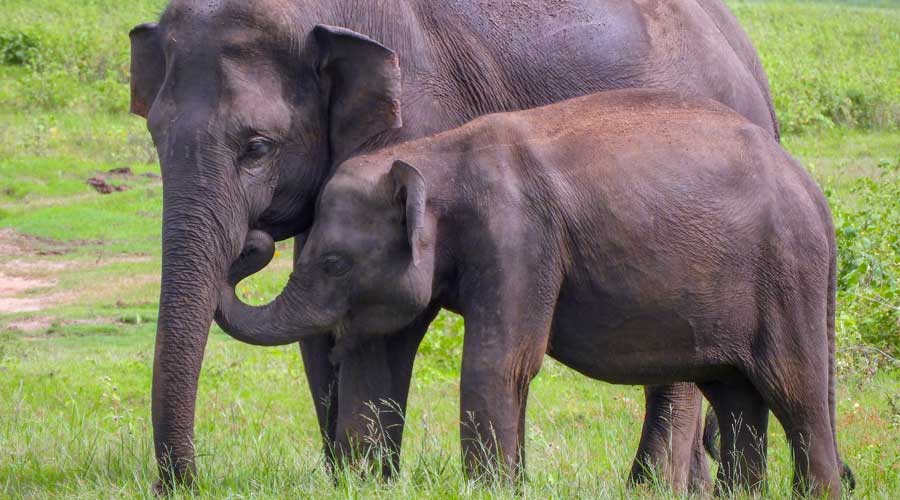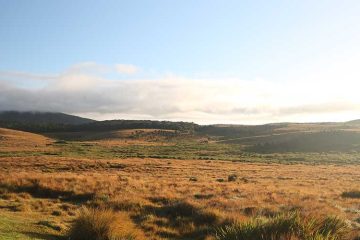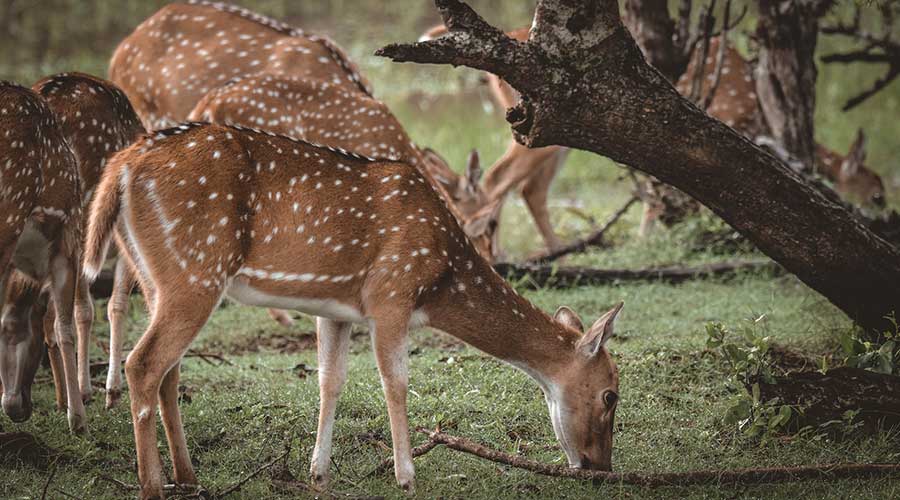What are you going to know about Kaudulla National Park?
Kaudulla National Park: A Biodiverse Haven in Sri Lanka
Nestled in the heart of Sri Lanka, Kaudulla National Park is a biodiverse haven that offers a glimpse into the country’s unique flora and fauna. Kaudulla National Park covers an area of 6,900 hectares and is situated in the Dry Zone of Sri Lanka. This national park, located in the central province of Sri Lanka, is renowned for its large herds of elephants that roam the open grasslands and forests. However, it is also home to a diverse range of other animals, including monkeys, leopards, and several species of birds.
History
The history of Kaudulla National Park dates back to the time of the ancient Sinhalese kingdoms of Anuradhapura and Polonnaruwa. The park was once part of the ancient irrigation system built by the kings to cultivate the fertile lands in the area. The ancient kings built a network of tanks and canals to divert water from the Kala Wewa, a large reservoir in the area, to the surrounding farmlands. The tanks and canals also served as a habitat for various species of birds and animals, including elephants, which were attracted to the lush vegetation and water.
During the colonial period, the forests in the area were cleared for timber, and the land was used for agriculture. The once-thriving ecosystem was depleted, and the wildlife population declined. In the 20th century, the Sri Lankan government established the Kaudulla National Park in an effort to restore the natural ecosystem and protect the remaining wildlife.
The park was officially declared a national park in 2002, and it is now one of the top tourist destinations in the country. The park is home to a wide variety of flora and fauna, including elephants, deer, sambar, wild boar, sloth bear, leopard, and many species of birds. The park is also known for its beautiful landscapes, which include grasslands, forests, and wetlands.
One of the main attractions of Kaudulla National Park is the annual elephant gathering, which takes place from August to December each year. During this period, hundreds of elephants migrate to the park from nearby forests in search of food and water. The spectacle of watching these majestic creatures in their natural habitat is a sight to behold.
Kaudulla National Park is also home to several ancient ruins, which are a testament to the area’s rich cultural heritage. The ruins include a monastery, a temple, and several ancient irrigation systems. These structures are a testament to the ingenuity of the ancient Sri Lankan people, who built a sophisticated system of irrigation that allowed them to cultivate the land and sustain their way of life.
Biodiversity
Flora:
Kaudulla National Park is home to a diverse range of plant species. The park is dominated by dry evergreen forests, which are characterized by a canopy of tall trees that are well adapted to the arid climate. These forests are interspersed with grasslands and wetlands, which support a variety of aquatic and semi-aquatic plant species.
One of the most important plant species found in Kaudulla National Park is the Kumbuk tree (Terminalia arjuna). The Kumbuk tree is an iconic species of Sri Lanka, and its wood is highly valued for its durability and resistance to decay. In addition to the Kumbuk tree, the park is also home to a variety of other important plant species, including the Weera tree (Drypetes sepiaria), Kaduru tree (Strychnos nux-vomica), and the Diospyros ebenum.
Fauna:
Kaudulla National Park is famous for its large populations of elephants. The park is home to over 200 elephants, making it one of the best places in Sri Lanka to observe these magnificent animals in their natural habitat. The elephants in Kaudulla National Park are known for their distinctive behavior, which includes swimming and bathing in the park’s many waterways.
In addition to elephants, the park is also home to a variety of other mammal species, including the Sri Lankan axis deer, Sri Lankan sambar deer, wild boar, and sloth bear. The park is also home to a variety of primates, including the toque macaque, purple-faced langur, and the endemic gray langur.
Birds:
Kaudulla National Park is a birdwatcher’s paradise, with over 200 species of birds recorded in the park. The park is particularly important for its water birds, including a number of endemic species such as the Sri Lankan wood pigeon, Sri Lanka spurfowl, and the Sri Lankan junglefowl. Other notable bird species found in the park include the painted stork, Asian openbill, and the little cormorant.
Reptiles:
Kaudulla National Park is also home to a variety of reptile species, including several endemic species such as the Sri Lankan flying snake and the Sri Lankan green pit viper. The park is also home to several species of crocodiles, including the mugger crocodile and the saltwater crocodile.
Activities
The park is known for its diverse array of flora and fauna, including the Asian elephant, leopard, sambar deer, and sloth bear. Here are some of the top activities to do in Kaudulla National Park:
Elephant Safaris: One of the best ways to explore the park is on an elephant safari. You can get up close and personal with these gentle giants and observe them in their natural habitat. The park is home to over 200 elephants, making it an ideal location for an elephant safari.
Bird Watching: Kaudulla National Park is a haven for bird watchers, with over 160 species of birds calling the park home. Some of the most common birds you can spot include the painted stork, black-headed ibis, and white-bellied sea eagle.
Nature Walks: Take a leisurely stroll through the park and appreciate its natural beauty. The park is home to a variety of trees, including teak, satinwood, and ebony. You can also spot a range of animals, including deer, monkeys, and wild boar.
Jeep Safari: A jeep safari is another popular way to explore the park. You can hire a jeep and a guide to take you through the park, giving you the chance to see some of its most iconic animals.
Night Safari: For a unique experience, book a night safari and explore the park after dark. You can observe nocturnal animals, such as the civet cat and the fishing cat, as well as witness the park’s stunning night sky.
Picnic: Kaudulla National Park is an ideal location for a picnic. You can pack a picnic basket and enjoy a meal amidst the park’s natural beauty. There are several designated picnic spots in the park, so you can choose the one that best suits your needs.
Cultural Tour: If you’re interested in the cultural history of Sri Lanka, take a cultural tour of the park. You can visit nearby historical sites, such as the ancient city of Polonnaruwa, and learn about Sri Lanka’s rich cultural heritage.
Photography: Kaudulla National Park is a photographer’s dream, with its stunning natural beauty and diverse wildlife. You can capture some incredible shots of animals, landscapes, and the park’s unique flora.
Boating: Take a boat ride on the park’s Kaudulla Reservoir and soak up the stunning scenery. You can also observe some of the park’s aquatic wildlife, including the Indian cormorant and the little egret.
Camping: For a truly immersive experience, consider camping in the park. You can pitch a tent and spend a night under the stars, listening to the sounds of the jungle and waking up to the park’s stunning sunrise.
Kaudulla National Park offers a wealth of activities for visitors to enjoy, from elephant safaris to nature walks to cultural tours. Whether you’re a wildlife enthusiast, a photographer, or simply looking to appreciate the natural beauty of Sri Lanka, Kaudulla National Park is a must-visit destination.
Best time to visit Kaudulla National Park
The park is open throughout the year, but the best time to visit Kaudulla National Park is during the dry season, which runs from May to September. During this time, the water levels in the Kaudulla Reservoir, which is located within the park, decrease, creating open areas of grasslands that attract large herds of elephants. This is the best time for elephant watching and the park is known to have one of the highest elephant densities in Sri Lanka, with herds of up to 200 individuals.
Moreover, during the dry season, the vegetation is less dense, making it easier to spot other wildlife species such as deer, sambar, and sloth bears, which tend to congregate around the water sources. This is also an excellent time for bird watching, as migratory birds flock to the park during the dry season, attracted by the abundant water and food sources.
On the other hand, the wet season in Kaudulla National Park lasts from October to January. The park is lush and green during this time, and the water levels in the Kaudulla Reservoir rise, covering the grasslands and making it more challenging to spot wildlife. However, the park is still open to visitors, and the scenery during this time is beautiful, with the lush greenery providing a refreshing backdrop for nature lovers.
Another factor to consider when deciding the best time to visit Kaudulla National Park is the timing of the annual elephant gathering, also known as the Kaudulla Elephant Gathering. This is a natural spectacle that occurs between August and September when hundreds of elephants migrate to the park in search of food and water. During this time, visitors can witness large herds of elephants moving through the grasslands, socializing, and engaging in various behaviors such as bathing and mating.
Conservation
The Kaudulla National Park is an essential conservation area in Sri Lanka, and several initiatives have been implemented to protect the park’s biodiversity. The park is managed by the Department of Wildlife Conservation, which works to protect the park’s flora and fauna from human activities and other threats.
The park’s elephant population is carefully managed, and several programs have been implemented to ensure their protection. The park is also home to several research programs that study the park’s biodiversity and ecology, helping to develop conservation strategies that protect the park’s unique ecosystem.
In conclusion, the Kaudulla National Park is a unique destination that offers visitors a glimpse into Sri Lanka’s rich biodiversity. The park’s large herds of elephants, endemic bird species, and other mammals make it an ideal destination for nature lovers and wildlife enthusiasts. The park’s conservation efforts ensure that its unique ecosystem remains protected, allowing visitors to experience the beauty of this biodiverse haven for years to come.



